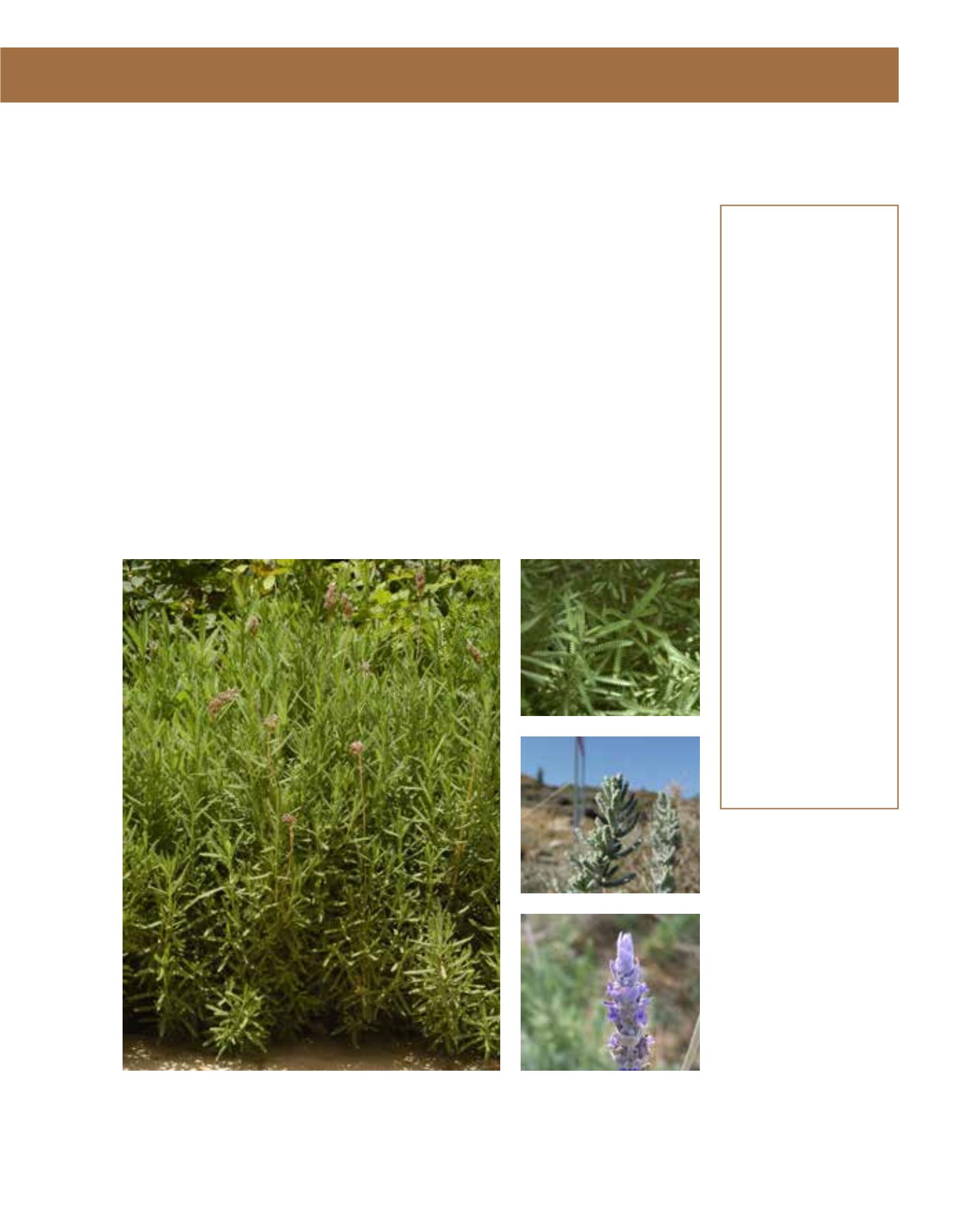

GENERAL
Origin
:
sub-Mediterranean,
Mediterranean
Vigour
:
slow-growing
Humidity
:
semi-arid, semi-
humid
Propagation :
sowing and
pricking out,
cuttings
Maintenance :
moderate
CONDITIONS
Urban climate :
vulnerable
Dessication :
resistant
Stagnant water :
vulnerable
Irrigation
:
medium
Salinity/ppm :
low (1000 ppm)
Hardiness
:
-6°C
SHAPE
Type
:
sub-shrub
Height
:
0.3 m-1 m
Spread
:
0.5 m-1.5 m
Foliage
:
evergreen
FLOWER
Colour
:
blue, violet
Size
:
2 cm - 5 cm
Period
:
March - June
Smell
:
scented, aroma,
strong, pleasantly
scented, gives
freely of its scent,
leaf, flower, spicy
FRUIT
Type of fruit :
nutlet, loment
Fruit size
:
0.1 cm
Toxicity
:
edible when
processed
Lavandula dentata is the Toothed Lavender, and has the English common name French Lavender.
The herb is an evergreen sub-shrub with a strong scent. Toothed Lavender is native to the Medi-
terranean, northwest Africa, Balearic Islands and Portugal. Regular pruning is also required for
the Toothed Lavender. The growth height varies between 30 and 100 cm. The lanceolate pastel-
grey-green leaves are dentate. The blue-violet, ear-like flowers are 2 to 5 cm across. The upper
petals have impressive appendages, which make this Lavender quite unique. This plant is popular
because of its attractive foliage, flowers and refreshing scent. French Lavender prefers alkaline,
rocky, silty and well-drained soils. Propagation is the same as for Common Lavender. Like L. an-
gustifolia, and owing to its evergreen foliage, it requires humidity to grow well. A sunny location
improves the flowering and scent, but in view of the extreme aridity of the Arriyadh region, and
because it does not adapt well to desert conditions, it is best planted in the protected environment
of a city garden. Irrigation should be medium with low salinity. The use for planting schemes is
comparable to that of the other variety. A a groundcover, grouped or massed plantation, in ed-
ging plantations as small hedge, in natural gardens with themes such as rock or steppe gardens,
it makes a good eye-catcher because of its ornamental shape. Sheltered planting in parks, public
open spaces, containers and private gardens are suitable locations for the use of Lavender in Ar-
riyadh.
188
Lavandula dentata,
Lamiaceae
Toothed Lavender
















